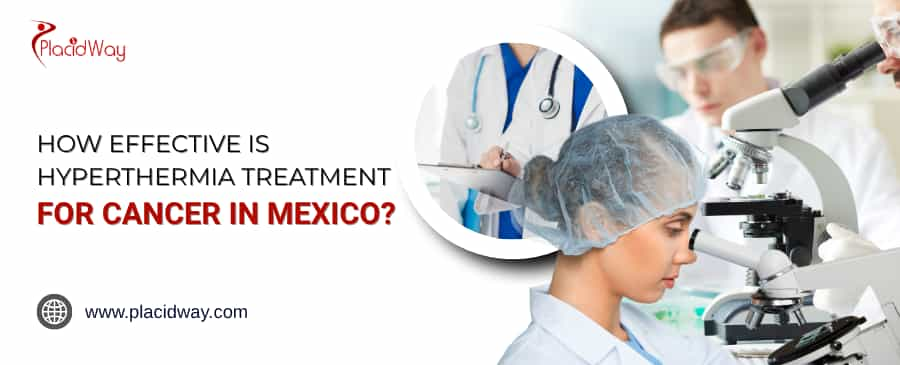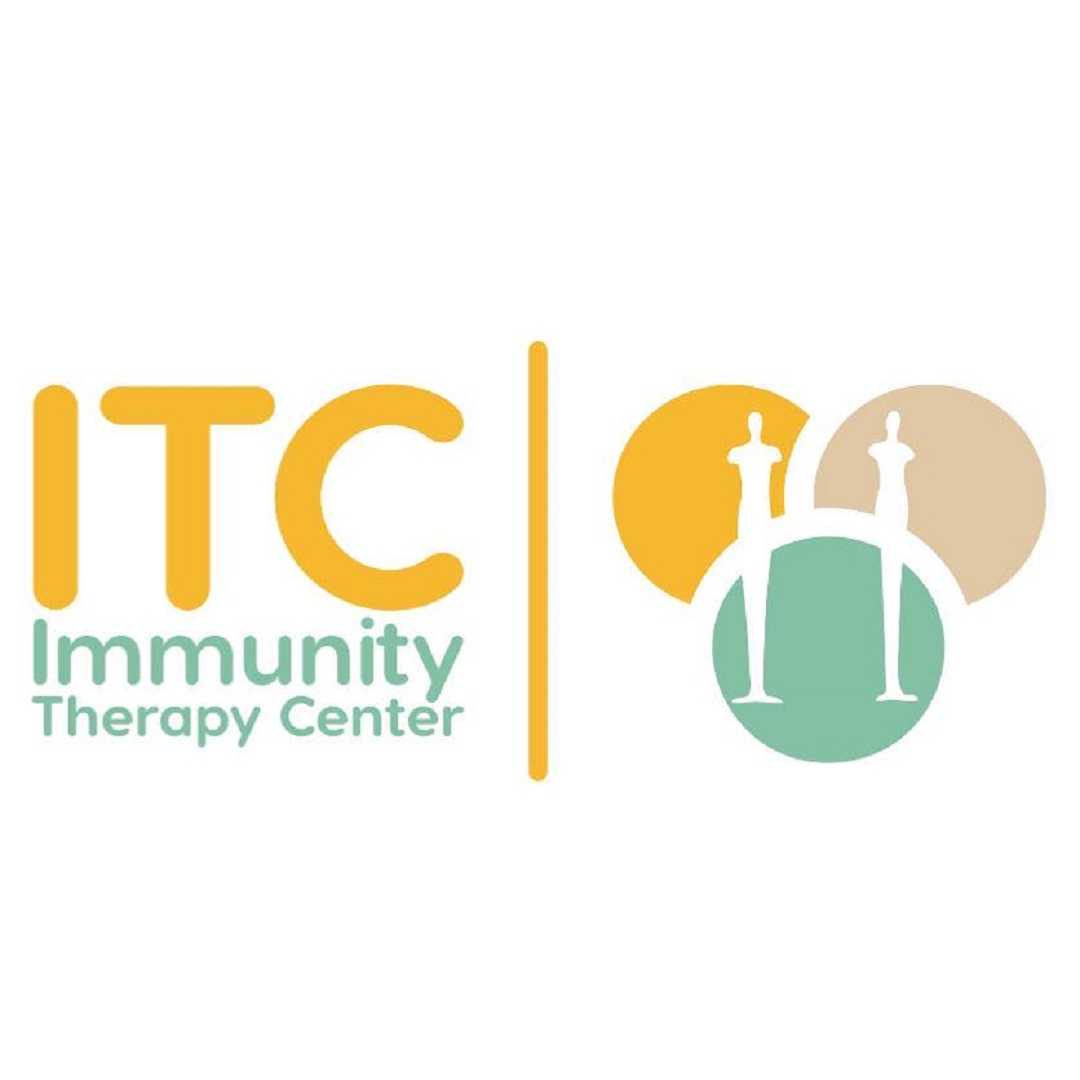Explore the Effectiveness of Hyperthermia Cancer Therapy in Mexico

Hyperthermia treatment in Mexico is an effective complementary therapy, often used to enhance the efficacy of conventional cancer treatments like chemotherapy and radiation. Many clinics offer advanced systemic and regional hyperthermia options, with costs generally more affordable than in other countries.
How Effective Is Hyperthermia Treatment for Cancer in Mexico?
Welcome to a comprehensive guide on hyperthermia treatment for cancer, specifically focusing on its availability and effectiveness in Mexico. If you or a loved one are exploring alternative or integrative cancer therapies, you've likely come across hyperthermia, a promising approach that uses heat to target and damage cancer cells. Mexico has emerged as a significant hub for innovative cancer treatments, including hyperthermia, attracting patients from around the globe seeking high-quality care at potentially more accessible costs.
Hyperthermia, at its core, involves raising the temperature of body tissue to a level that can kill cancer cells or make them more vulnerable to other treatments. The concept is simple: cancer cells are often more sensitive to heat than healthy cells. When combined with conventional therapies like chemotherapy or radiation, hyperthermia can significantly enhance their impact. In Mexico, many clinics offer various forms of hyperthermia, from local application to whole-body treatments, often integrated into broader, personalized cancer care plans. This blog post aims to answer your most pressing questions about hyperthermia in Mexico, providing clear, concise answers followed by detailed explanations to help you make informed decisions about your treatment journey. We will delve into its effectiveness, the different types available, associated costs, and what to expect from Mexican clinics that offer this therapy.
What is hyperthermia treatment for cancer?
Hyperthermia is a cancer treatment that uses heat to damage or destroy cancer cells and reduce tumor size. It works on the principle that cancer cells are typically more sensitive to heat than normal cells. Temperatures between 40°C (104°F) and 45°C (113°F) are commonly used during the therapy.
Beyond its direct cytotoxic effects, hyperthermia also works synergistically with other cancer treatments. It can make cancer cells more sensitive to radiation therapy and certain chemotherapy drugs, essentially making these conventional treatments more effective at lower doses, which can potentially reduce side effects. Additionally, heat can improve blood flow to the tumor area, delivering more oxygen and therapeutic agents, further enhancing treatment efficacy. This makes hyperthermia a valuable integrative therapy, often used as an adjunct to standard cancer protocols rather than a standalone treatment.
How effective is hyperthermia when combined with other cancer treatments?
Numerous clinical trials and studies have demonstrated that hyperthermia, when combined with treatments such as radiation therapy and chemotherapy, helps shrink tumors and may make it easier for these therapies to kill cancer cells.The National Cancer Institute (NCI) notes that hyperthermia can improve the efficacy of these conventional treatments.
-
Synergistic Effects: Hyperthermia enhances the efficacy of other treatments through several mechanisms:
-
Increased Sensitivity: Heat can damage the repair mechanisms of cancer cells, making them less able to recover from the damage inflicted by radiation or chemotherapy.
-
Improved Drug Delivery: Heating the tumor can increase blood flow, which in turn can lead to higher concentrations of chemotherapy drugs reaching the cancerous tissue.
-
Immune System Activation: Hyperthermia may also stimulate an immune response against cancer cells by inducing the release of heat shock proteins, which can act as signals for the immune system.
-
For example, studies have shown that adding hyperthermia to radiation therapy for locally advanced cervical cancer significantly improved the overall survival rate. Similarly, for soft tissue sarcomas, regional hyperthermia combined with chemotherapy has been observed to double the length of overall survival in some cases. It's important to note that while promising, the exact effectiveness can vary depending on the type and stage of cancer, as well as the specific hyperthermia technique used.
Are there different types of hyperthermia treatment available in Mexico?
Mexican clinics offering hyperthermia treatment for cancer typically provide various types, depending on the extent of the area being treated and the technology available.
-
Local Hyperthermia: This method focuses heat on a small area, such as a specific tumor. It often uses high-energy waves (like radio waves, microwaves, or ultrasound) aimed at the tumor from a machine outside the body, or a thin needle/probe inserted directly into the tumor to deliver heat. This approach is commonly used for tumors that are close to the surface of the body or accessible via a probe.
-
Regional Hyperthermia: This type heats a larger area of tissue, such as an organ, a body cavity, or a limb.
-
Deep Tissue Hyperthermia: Devices use high-energy waves to heat tumors deep within the body.
-
Regional Perfusion (or Isolation Perfusion): Blood from a specific body part (e.g., an arm or leg with sarcoma or melanoma) is removed, heated with chemotherapy, and then returned to the area.
-
Hyperthermic Intraperitoneal Chemotherapy (HIPEC): This is a specialized regional hyperthermia technique used for certain abdominal cancers. During surgery, a heated chemotherapy drug is circulated within the abdominal cavity.
-
-
Whole-Body Hyperthermia: This method raises the entire body's temperature to hyperthermic levels. This can be achieved using various techniques, such as thermal chambers, heated blankets, or warm water immersion. The goal is to induce a "fever-like" state to impact cancer cells systemically. Some clinics in Mexico, like the Immunotherapy Institute, specifically highlight their systemic perfusion hyperthermia, where blood is circulated through an external heating system.
Clinics in Mexico like Stem Health Clinic, Mexstemcells, and Pain Medical Group offer variations of these hyperthermia types as part of their comprehensive cancer treatment programs, often integrating them with other non-toxic and conventional therapies.
What are the potential benefits of hyperthermia treatment for cancer?
The potential benefits of hyperthermia treatment for cancer are multifaceted, making it an attractive option, particularly when used as an integrative therapy.
-
Enhanced Efficacy of Other Treatments: One of the primary benefits is its ability to sensitize cancer cells to other treatments. When cancer cells are heated, they become more vulnerable to the damaging effects of chemotherapy and radiation therapy. This allows these conventional treatments to be more effective, potentially even at lower doses, which can help in reducing their associated side effects.
-
Direct Cancer Cell Killing: At higher temperatures, hyperthermia can directly damage and destroy cancer cells. Cancer cells often have less efficient blood supply and heat dissipation mechanisms compared to healthy cells, making them more susceptible to thermal stress.
-
Improved Blood Flow: Heat can increase blood flow to the tumor site. This improved circulation can enhance the delivery of oxygen and anti-cancer drugs, which are crucial for the effectiveness of therapies like radiation and certain chemotherapies.
-
Immune System Modulation: There is evidence suggesting that hyperthermia can stimulate the immune system to recognize and attack cancer cells. Heating can induce the release of "heat shock proteins" and other molecules that signal to the immune system, potentially boosting the body's natural defenses against cancer.
-
Reduced Side Effects (when synergistic): By increasing the sensitivity of cancer cells, hyperthermia can sometimes allow for lower doses of chemotherapy or radiation, potentially leading to fewer or less severe side effects from those treatments.
-
Palliative Care: In some cases, hyperthermia can be used for palliative care, helping to alleviate symptoms such as pain associated with tumors, thereby improving the patient's quality of life.
While hyperthermia holds significant promise, it's typically part of a broader treatment strategy and its benefits are maximized when integrated into a personalized care plan.
What are the general costs of hyperthermia treatment in Mexico?
The costs associated with hyperthermia treatment in Mexico are generally more affordable than in countries like the United States, making Mexico a popular destination for medical tourism.
-
Type of Hyperthermia: Local, regional, or whole-body hyperthermia may have different pricing structures.
-
Clinic and Program: Different clinics offer varying packages and levels of care. Some provide standalone hyperthermia sessions, while others integrate it into comprehensive, multi-week programs that include other therapies, consultations, and even accommodation.
-
Duration of Treatment: The length of the treatment program will directly impact the total cost. Some programs can range from 18 days to several weeks.
-
Ancillary Services: Whether the cost includes diagnostic tests, follow-up care, nutrition plans, or other integrative therapies will also influence the total price.
Immunity Therapy Center (ITC), offers a three-week outpatient program for around $18,995 USD and an inpatient program for $29,995 USD. These costs typically encompass not just the hyperthermia sessions but often a broader package of integrative treatments and support. It's crucial for prospective patients to get a detailed breakdown of costs from the clinic to understand what is included in the quoted price.
What should I expect during a hyperthermia treatment session?
-
Preparation: Before the session, medical staff will explain the procedure and ensure you are comfortable. Depending on the method, you might be asked to change into a gown. For whole-body hyperthermia, you might be given light sedation to help you relax and tolerate the elevated temperature.
-
During the Session:
-
Local/Regional Hyperthermia: If it's a localized treatment, a specialized device will be positioned over or near the tumor area. This device will emit energy (e.g., radiofrequency waves, microwaves, or ultrasound) to heat the target tissue. If an invasive probe is used, it will be carefully inserted into the tumor. You might feel warmth or heat, but discomfort is usually managed.
-
Whole-Body Hyperthermia: You will be placed in a controlled environment, such as a thermal chamber, or receive treatment through a perfusion system. Your body temperature will be gradually raised and maintained at the therapeutic level.
-
-
Monitoring: Throughout the entire session, medical professionals will closely monitor your vital signs, including temperature, heart rate, and blood pressure. This is crucial to ensure safety and maintain the desired therapeutic temperature range without overheating. Many advanced hyperthermia systems are computer-controlled to minimize human error and ensure precise temperature regulation.
-
Duration: The length of a hyperthermia session can vary. Local sessions might last for less than an hour, while systemic perfusion hyperthermia, as offered by some clinics, can take 2-4 hours to achieve significant benefits.
-
Post-Treatment: After the session, you’ll be monitored briefly to ensure your body temperature stabilizes and you’re feeling well. Most healthy tissues remain unharmed if the temperature stays below 43.9°C (111°F). Any side effects are typically mild and short-lived, such as fatigue, skin redness, or slight discomfort.
Overall, the experience is designed to be as comfortable and safe as possible, with medical staff present to address any concerns.
Are hyperthermia treatments in Mexico safe?
-
Trained Professionals: Leading clinics in Mexico employ experienced oncologists and medical teams who are skilled in administering hyperthermia. They are trained to monitor patients closely throughout the treatment to prevent overheating and manage any potential side effects.
-
Advanced Equipment: Modern hyperthermia devices, especially those used for whole-body or systemic perfusion hyperthermia, are designed with precise temperature control systems. These systems often use computer regulation to ensure that the target temperature is reached and maintained accurately without damaging healthy tissues.
-
Controlled Temperatures: The therapeutic temperature range for hyperthermia is carefully maintained between 40°C and 45°C. At these temperatures, cancer cells become more vulnerable to heat, while healthy cells are typically more resistant and can withstand the treatment without significant harm.
-
Potential Side Effects: While generally safe, some temporary and mild side effects can occur, such as:
-
Fatigue
-
Skin redness or discomfort in the treated area (for local hyperthermia)
-
Mild nausea or dehydration (for whole-body hyperthermia)
-
Rarely, more severe complications like burns or blood clots can occur if the treatment is not properly administered, highlighting the importance of choosing a reputable clinic.
-
Patients considering hyperthermia in Mexico should research clinics thoroughly, inquire about their accreditations, physician qualifications, and patient safety protocols to ensure a safe and effective treatment experience.
What are the success rates of hyperthermia treatment for cancer in Mexico?
Its effectiveness and reported "success rates" are predominantly observed when it is integrated with conventional treatments like chemotherapy or radiation therapy.
-
Enhanced Response Rates: Clinical studies have shown significant improvements in tumor response and complete remission rates when hyperthermia is added to radiation or chemotherapy. For example:
-
For locoregional recurrence of breast cancer, combining hyperthermia with radiation therapy improved the complete response rate from 38.1% to 60.2% in one meta-analysis.
-
In locally advanced cervical cancer, the combination of hyperthermia and chemoradiation more than doubled the 3-year disease-free survival rate.
-
-
Increased Overall Survival: For certain cancers, combining hyperthermia with conventional treatments has shown to increase overall survival. For instance, regional hyperthermia added to chemotherapy has been shown to significantly extend median overall survival in patients with high-risk localized soft tissue sarcoma.
-
Symptom Relief: Beyond tumor shrinkage, hyperthermia can also be effective in providing palliative relief, such as reducing pain in patients with painful bone metastases.
-
Patient Testimonials: While not clinical data, many clinics in Mexico that offer hyperthermia feature patient testimonials reporting positive outcomes and significant improvements in their condition. These anecdotal reports can offer a glimpse into individual experiences.
It's crucial for prospective patients to discuss their specific cancer type and stage with the medical team at a chosen clinic to understand the realistic expectations and potential benefits of hyperthermia within their personalized treatment plan. Reputable clinics will provide evidence-based information and explain how hyperthermia fits into their overall therapeutic strategy.
Which types of cancer respond best to hyperthermia treatment?
While hyperthermia treatment is generally applied as an adjunctive therapy, certain types of cancer have shown more notable responses when hyperthermia is combined with conventional treatments.
Cancers that have demonstrated positive responses include:
-
Soft Tissue Sarcomas: Regional hyperthermia combined with chemotherapy has shown significant improvements in overall survival for high-risk localized soft tissue sarcomas.
-
Melanoma: Isolated limb perfusion with hyperthermia and chemotherapy is an established treatment for advanced melanoma in an extremity.
-
Breast Cancer: Hyperthermia combined with radiation therapy has demonstrated improved local control and complete response rates for recurrent breast cancer, particularly on the chest wall.
-
Cervical Cancer: Combining hyperthermia with radiation therapy or chemoradiation has shown improved survival and local control rates in locally advanced cervical cancer.
-
Head and Neck Cancers: Hyperthermia has been studied in conjunction with radiation therapy for head and neck cancers, showing enhanced local control.
-
Esophageal Cancer: Studies have explored hyperthermia's role in improving outcomes for esophageal cancer when combined with other treatments.
-
Rectal Cancer: Hyperthermia with radiotherapy has been investigated for rectal cancer with promising results in some cases.
-
Locally Advanced or Recurrent Cancers: Hyperthermia is often particularly beneficial for tumors that are difficult to treat with conventional methods alone, or for recurrent cancers where previous treatments might have been less effective.
The response to hyperthermia is often linked to the tumor's size, location, and blood supply. Tumors that are hypoxic (low in oxygen) or have poor blood flow can be more susceptible to heat damage, as they are less efficient at dissipating heat. It is essential to consult with a medical professional to determine if hyperthermia is an appropriate treatment option for a specific cancer type and stage.
How long does a typical hyperthermia treatment course last in Mexico?
The duration of a hyperthermia treatment course in Mexico can vary significantly, depending on the specific clinic, the type of cancer, its stage, and whether hyperthermia is administered as part of a larger integrative program or as a standalone therapy.
-
Individual Sessions: A single hyperthermia session, especially for local or regional applications, might last anywhere from 30 minutes to 4 hours. For instance, some clinics suggest 2 to 4 hours of constant and sustained hyperthermia per session for optimal benefits.
-
Treatment Protocols/Programs: Mexican clinics often integrate hyperthermia into comprehensive treatment protocols that span several weeks.
-
Many clinics offer programs that range from 18 days to 25 days. These multi-week programs typically include multiple hyperthermia sessions, alongside other therapies like immunotherapy, nutritional support, detoxification, and psychological counseling.
-
For instance, the Immunity Therapy Center (ITC) offers 3-week outpatient and inpatient programs that include hyperthermia.
-
The exact length and frequency of hyperthermia sessions within these programs are usually tailored to the patient's individual case, based on medical evaluations, diagnostic tests, and the doctor's assessment of how the patient is responding to treatment. Therefore, prospective patients should consult with the clinic directly to understand the proposed duration of their specific hyperthermia treatment plan.
-
What are the common side effects of hyperthermia treatment?
The side effects of hyperthermia treatment are generally mild and temporary, especially when the procedure is performed correctly by experienced medical professionals.The specific side effects can vary depending on the type of hyperthermia (local, regional, or whole-body) and the area being treated.
Common side effects include:
-
Fatigue: This is a common systemic side effect, particularly after whole-body hyperthermia sessions. Patients may feel tired or run down for a short period after treatment.
-
Skin Redness or Discomfort: For local hyperthermia, the skin in the treated area might become red, swollen, or tender. This is similar to a mild burn and usually resolves quickly.
-
Pain or Discomfort: Patients might experience mild pain or discomfort in the treated area during or immediately after the session, which is typically manageable with medication.
-
Nausea or Vomiting: These are less common but can occur, especially with whole-body hyperthermia due to the systemic elevation of body temperature.
-
Dehydration: With whole-body hyperthermia, there is a risk of dehydration due to increased perspiration. Clinics manage this by ensuring proper hydration before, during, and after the treatment.
-
Blood Clots: In very rare cases, and particularly with regional perfusion techniques, there can be a risk of blood clots, but this is minimized with careful monitoring and preventative measures.
-
Burns: While rare with modern, precisely controlled equipment, superficial burns can occur if the temperature is not adequately managed.
Most healthy tissues are generally not damaged during hyperthermia if the temperature is kept below approximately 43.9°C (111°F). Any side effects are closely monitored by the medical team, and patients are typically well-cared for to ensure comfort and safety throughout the treatment process.
How does hyperthermia treatment differ from traditional cancer therapies like chemotherapy and radiation?
Hyperthermia treatment represents a distinct approach to cancer therapy compared to traditional methods like chemotherapy and radiation therapy, although it is often used in conjunction with them due to its synergistic effects.
Here's a breakdown of their key differences:
-
Mechanism of Action:
-
Hyperthermia: Directly damages cancer cells through heat. It causes proteins to unfold, cellular structures to break down, and cellular processes to malfunction. It also compromises the blood supply to tumors and can stimulate an immune response.
-
Chemotherapy: Uses powerful chemicals to kill rapidly growing cells throughout the body, including cancer cells. These drugs work by interfering with cell division or damaging DNA.
-
Radiation Therapy: Uses high-energy radiation (like X-rays or protons) to damage.
-


.png)
.png)













Share this listing